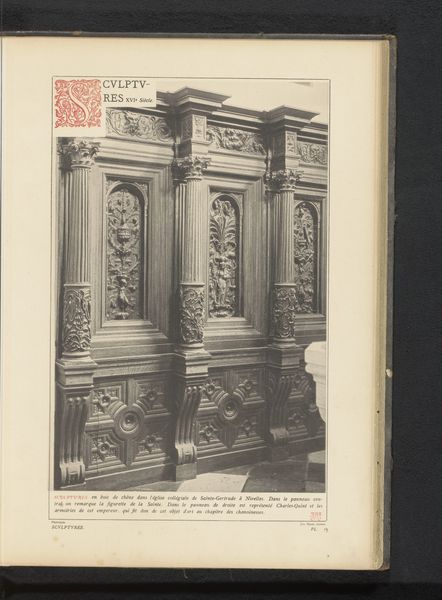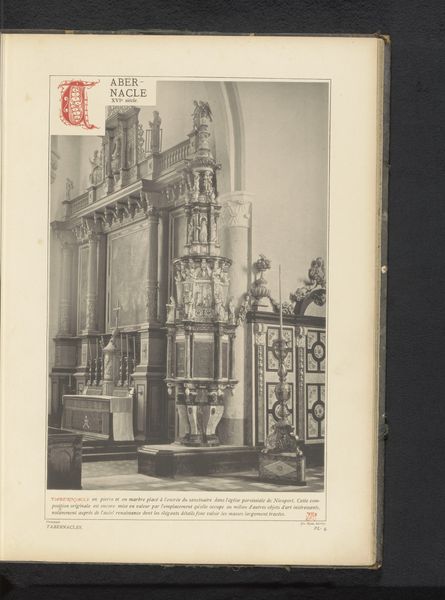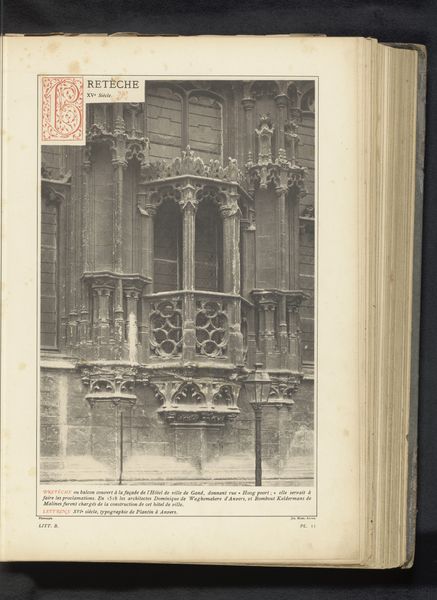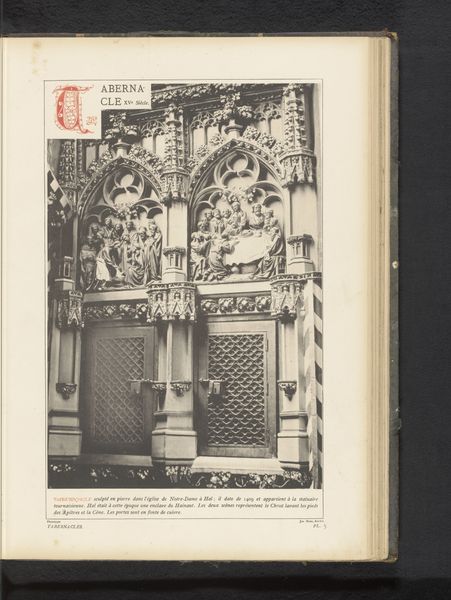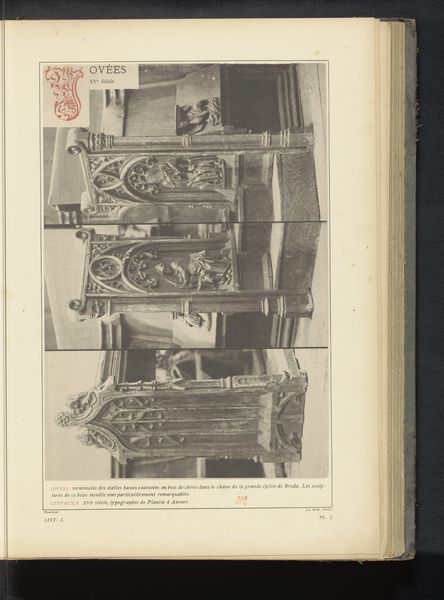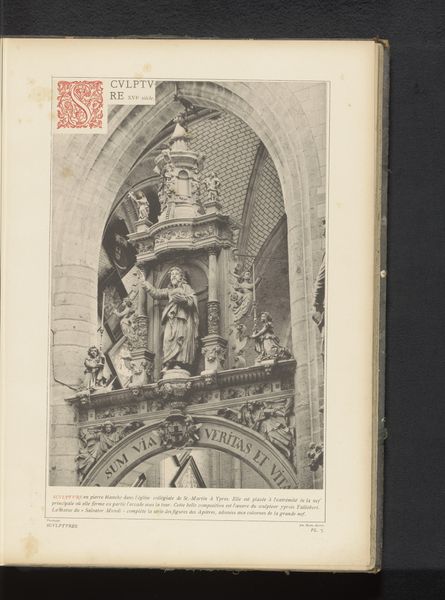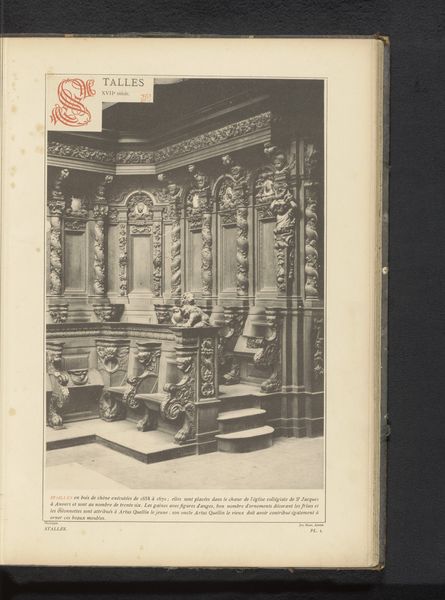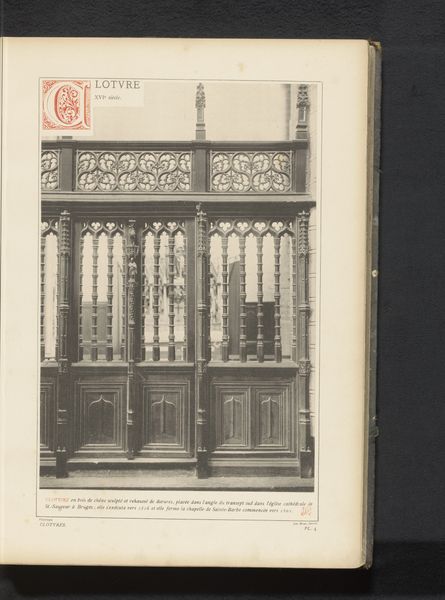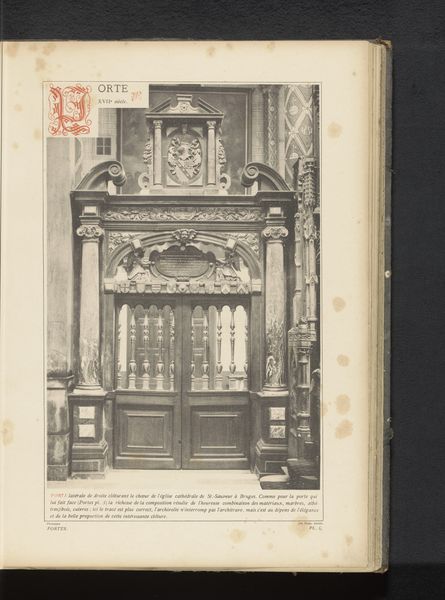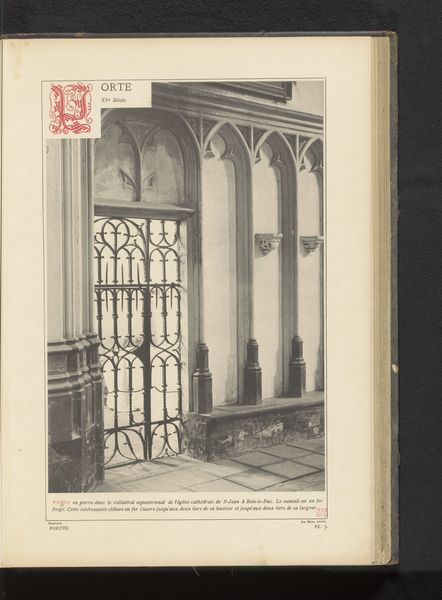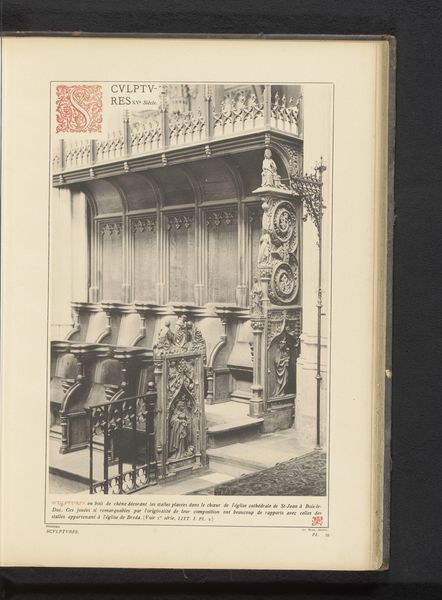
Gedecoreerde eikenhouten zijkanten van een koorbank in de Grote Kerk in Breda before 1880
0:00
0:00
Dimensions: height 340 mm, width 232 mm
Copyright: Rijks Museum: Open Domain
Curator: These prints capture a fascinating fragment of history: decorated oak panels, before 1880, from choir stalls in the Grote Kerk in Breda. Editor: The figures within the panels are compelling. The light and shadow suggest not just form, but a sort of spiritual weight on them. Curator: Indeed, the gothic carving carries an interesting echo of medieval symbolism, especially in ecclesiastical spaces. Choir stalls weren't just furniture, but statements of power, piety, and civic pride. Editor: The composition really draws the eye in. The artist uses decorative coils, along with small, vaulted figural niches above—they're incredibly skilled, really effective. Curator: Yes, and note how these aren't isolated objects, they are contextualized within what seems to be the larger choir; so what were they supposed to convey to their 19th century public? I assume it helped to invoke a sense of connection to the past? Editor: Precisely! It also says something about the cultural value assigned to preservation. Someone felt this piece of gothic craftsmanship deserved documentation. So was this documentation about reverence or perhaps it was about appropriation? Did it signal that gothic motifs were desirable at the time? Curator: Well, perhaps the carving spoke to an understanding of the divine order or a shared history within the Church. Its survival into print also speaks of resilience of images and the ways that visual symbols may persist long beyond their original intention. Editor: The print also helps us to understand that these choir stalls represented a powerful dialogue, a continuous process through time. And by viewing this print now, we ourselves are involved in its conversation. Curator: Yes. These modest pieces of woodwork remind us that history, belief, and artistry often converge in the most unassuming places, influencing everything else.
Comments
No comments
Be the first to comment and join the conversation on the ultimate creative platform.
